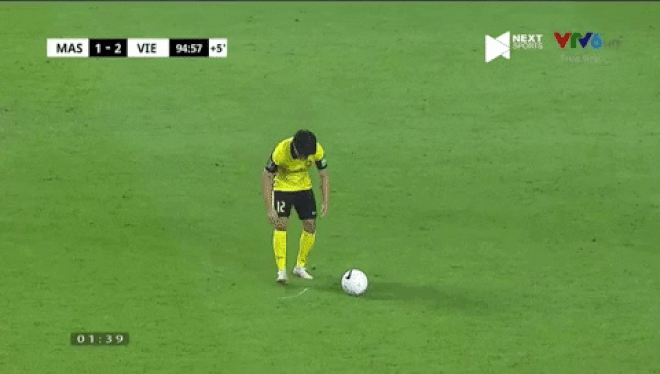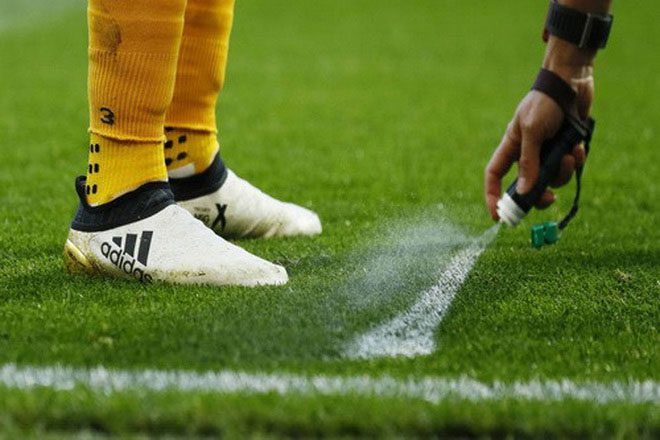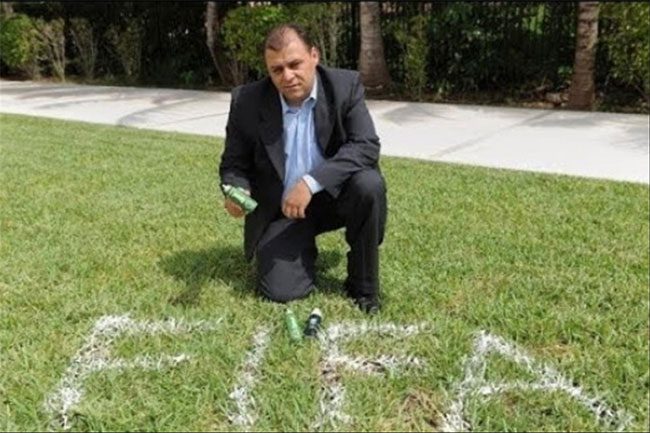This is an extremely useful invention for the world of football following yellow cards, red cards, and referee whistles.
In a match against the Vietnam national team, with only about 1 minute remaining in the official playing time, the Malaysian national team was awarded a free kick. After the referee marked the free kick spot, the camera detected that player number 12 from Malaysia was cheating by scooping up some “white powder” from the ground and lifting it a few centimeters.

Malaysian player caught cheating by scooping up “white powder” from the ground, lifting it a few centimeters.
As we know, this act of cheating by the player was quickly discovered by the referee. So, what is the white powder in the referee’s spray made of? And why do referees use it?
It is known that this is vanishing foam, which referees always carry with them during matches. It is typically used to mark the positions where defensive players can stand during an opponent’s direct free kick (not closer than 9.1 meters) or to indicate where the ball should be placed for the team awarded the free kick.

At first glance, this vanishing foam looks similar to white paint.
Essentially, this vanishing foam appears similar to white paint. However, the interesting part is that it will disappear on its own and leave almost no trace within about 1 minute.
With this unique feature, such foam sprays have become essential tools for referees when officiating on the field.
In terms of composition, the vanishing foam spray contains 80% water, 17% butane, 1% surfactant, and the remaining 2% consists of various additives and other materials. Notably, butane is a substance that can evaporate very quickly, contributing to the formation of gas bubbles in the surfactant/water mixture. Meanwhile, surfactant is a substance that stabilizes the bubbles, making them more durable to form foam.

Heine Allemagne, the “father” of the self-destroying spray paint invention.
In 2000, inventor Heine Allemagne successfully developed this special foam under the name Spuni. It was first used in professional football at the Brazilian Championship Copa João Havelange in 2001.
The international patent application related to Spuni was submitted on March 31, 2000, and approved on October 29, 2002.
Since then, vanishing foam has been used in many football tournaments worldwide. In June 2014, the latest commercial version of this vanishing foam spray, named “9-15”, was launched at the 2014 World Cup and developed by an Argentine named Pablo Silva.





















































